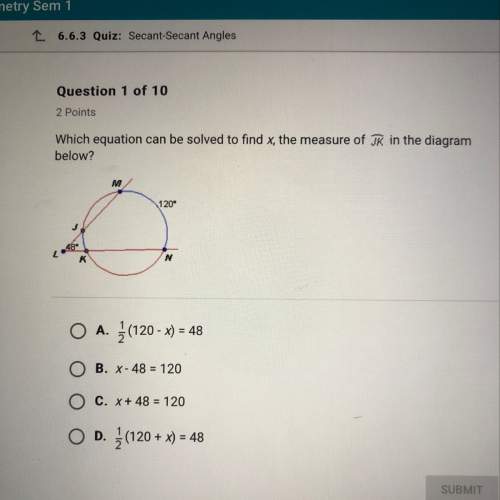
Mathematics, 09.07.2019 02:30 sjackson0625p8w1a0
You plan on making a $235.15 monthly deposit into an account that pays 3.2% interest, compounded monthly, for 20 years. at the end of this period, you plan on withdrawing regular monthly payments. determine the amount that you can withdraw each month for 10 years, if you plan on not having anything in the account at the end of the 10 year period and no future deposits are made to the account. a.$769.27b.$767.23c.$78,910.41d.$79 ,120.84

Answers: 1


Other questions on the subject: Mathematics


Mathematics, 21.06.2019 20:30, Franciscoramosxt
What is the difference between the equations of a vertical and a horizontal line?
Answers: 2


Mathematics, 21.06.2019 22:00, erikacastro5404
The point of intersection of the diagonals of a rectangle is 4 cm further away from the smaller side then from the larger side of the rectangle. the perimeter of the rectangle is equal to 56 cm. find the lengths of the sides of the rectangle. 16 points answer quick
Answers: 1
You know the right answer?
You plan on making a $235.15 monthly deposit into an account that pays 3.2% interest, compounded mon...
Questions in other subjects:

Biology, 10.07.2019 14:00

Biology, 10.07.2019 14:00

Mathematics, 10.07.2019 14:00


Mathematics, 10.07.2019 14:00

Health, 10.07.2019 14:00

Mathematics, 10.07.2019 14:00


Mathematics, 10.07.2019 14:00

![FV = P [\frac{(1+r)^n-1}{r} ]](/tpl/images/1118/6094/48600.png)

![FV = 235.15[\frac{(1+\frac{2}{75})^{240}-1}{\frac{2}{75}}]](/tpl/images/1118/6094/fc148.png)










